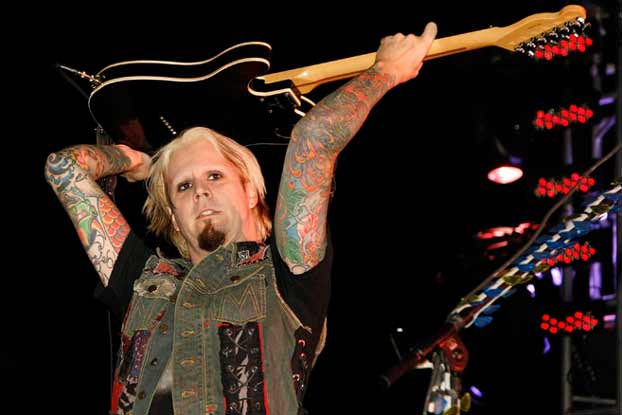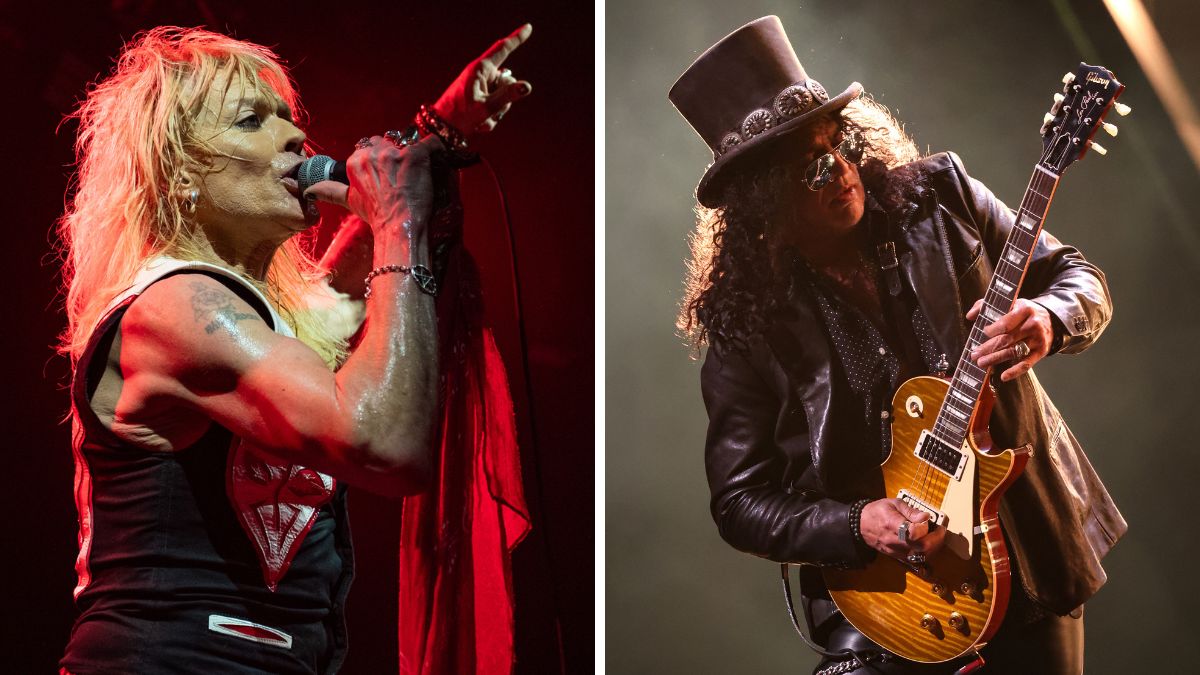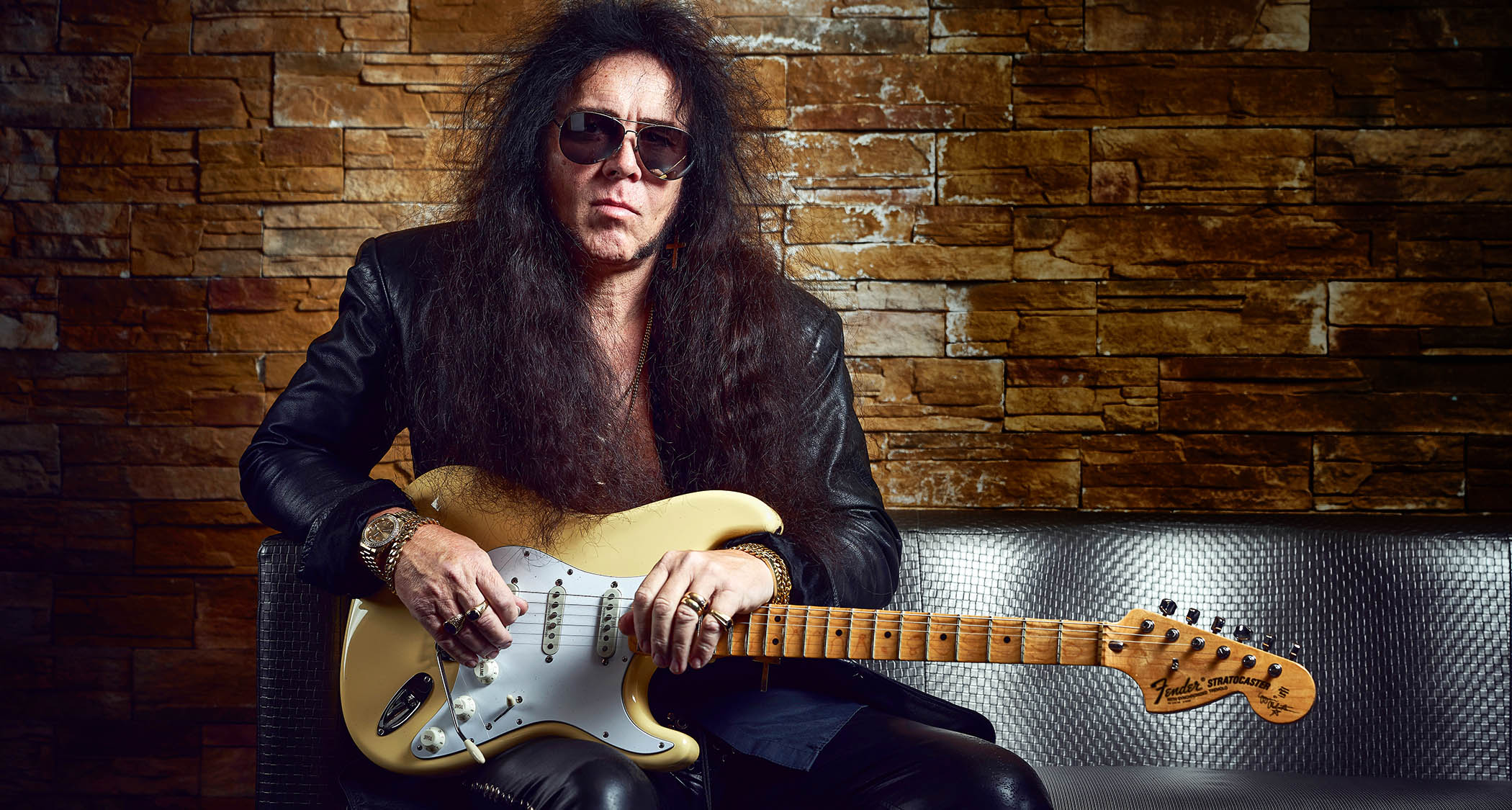Supreme Shredder John 5 Discusses His Demanding New Album, 'Season of the Witch'

“I was like a fighter training for the fight, which is being in the studio,” John 5 says about the mental and physical preparation for Season of the Witch, his ninth solo instrumental album containing arguably some of the most complex, challenging and madly creative licks the Telecaster devotee has ever conjured.
“It would be about three weeks of complete and utter training for hours and hours every day of just one song. I would get these complicated songs down so well and I would know every single part and every harmony, then go into the studio and knock a song out in about two hours.”
Supported by his band the Creatures on bass and drums—Ian Ross and Rodger Carter, respectively—the guitarist rolled out one song and an accompanying video each month over the course of half-a-year in an attempt to stay in lockstep with the new digital streaming paradigm of not only listening to music but watching it on sites like YouTube.
Produced by John 5 and recorded at Carter’s own Doghouse Studio in Woodland Hills, California, Season of the Witch is a strange and sprawling tableau of guitar techniques ranging from bass-styled slapping on “Here’s to the Crazy Ones,” artful and exotic string bending on “Behind the Nut Love” and some of the sickest and most startling country picking you’ve ever heard on songs like “Hell Haw” and “Black Grass Plague.”
Below, you'll find an excerpt of our new interview. For the full read, check out the all-new May 2017 issue of Guitar World.
What was the preproduction process like prior to entering the studio?
I have a metronome app on my phone and I will find the tempo and I’ll go bit by bit. Maybe do a riff and a verse a day and then the next day I’ll do the chorus and the solo. That’s about a week of writing [for one song]. I want to do different licks and I don’t want to do the same thing. Then for about two weeks, I’ll practice that so I can do it with my eyes closed in a dark room.
You’re practicing the song from top to bottom as a live performance?
Exactly right. I’ll even play a game with myself where I’ll say, “Pick out the 54th note,” and I’ll go through the song and I’ll know exactly what note that is and that’s how well I’ll be prepared for the studio. I just want it to sound so live and so rippin’ because it is complicated and I want it to sound fluid like water flowing and no struggle there. I would do that for every song.
Get The Pick Newsletter
All the latest guitar news, interviews, lessons, reviews, deals and more, direct to your inbox!
Were the rhythm tracks cut live?
Yes, and it’s brutal and it’s fun. It’s a challenge. I’m in the control room usually cutting tracks with the drummer. If you listen to it, there are very minimal harmonies or overdubs and I do that after I’ve played a track all the way through. Then my great bass player, Ian Ross, will come in and lay the bass on. It’s all in a performance and that’s how people see it live too. When they come see it live and you know a song, it’s just like how it is on record.
Which of your many Telecasters did you use during the recording?
I did probably 90 percent of the album with my gold Signature Telecaster that’s about six or seven years old, and I used the Broadcaster for “Behind the Nut Love” and “Hell Haw.”
Why have you remained a staunch Telecaster player all these years?
When I was growing up, all we did was watch TV and I saw a little boy playing on Hee Haw. I knew I loved the electric guitar and they all played Telecasters but I didn’t know what a Telecaster was. I just thought, That’s what an electric guitar looks like. I didn’t know there were even any other brands or any other shapes. That’s the reason I play ’em, because it stuck in my brain so much.
So if Roy Clark and those various guitarists on Hee Haw had been playing Les Pauls, you’d be a Gibson guy now?
Absolutely 100 percent.
The Telecaster isn’t typically considered a metal guitar and is fairly difficult to get a big sound out of.
It’s true; it’s really tough. I put DiMarzio D Activator DP200 pickups in all my guitars—I love how they sound. There are many players out there who are tone experts and tone geniuses. Les Paul was one, Eddie Van Halen was another, but I just know what works for me and what sounds good. I’m like, “Okay, cool. That sounds good.” But I don’t really get into the science of it like Eric Johnson. I’m just like, “Yeah, this sounds awesome.”
Speaking of Les Paul, you can hear his influence on “Hell Haw.”
It’s all Les Paul and Jerry Reed.
How did you achieve that clean guitar sound on “Hell Haw”?
The best way to describe it is guitar, cord and amp. You don’t have anything in the way. There’s a delay for a little bit of the solo but it’s pretty much the most pure signal you can get. That’s all Chet Atkins stuff where you’re playing the melody and the bass part at the same time and then the solos are inspired by Chet Atkins, Jerry Reed, Les Paul or Scotty Anderson. Hopefully younger players will pick up on that and go, “Oh, okay. That’s cool.”
For the rest of this interview and much more, pick up the all-new May 2017 issue of Guitar World, which is available now.









